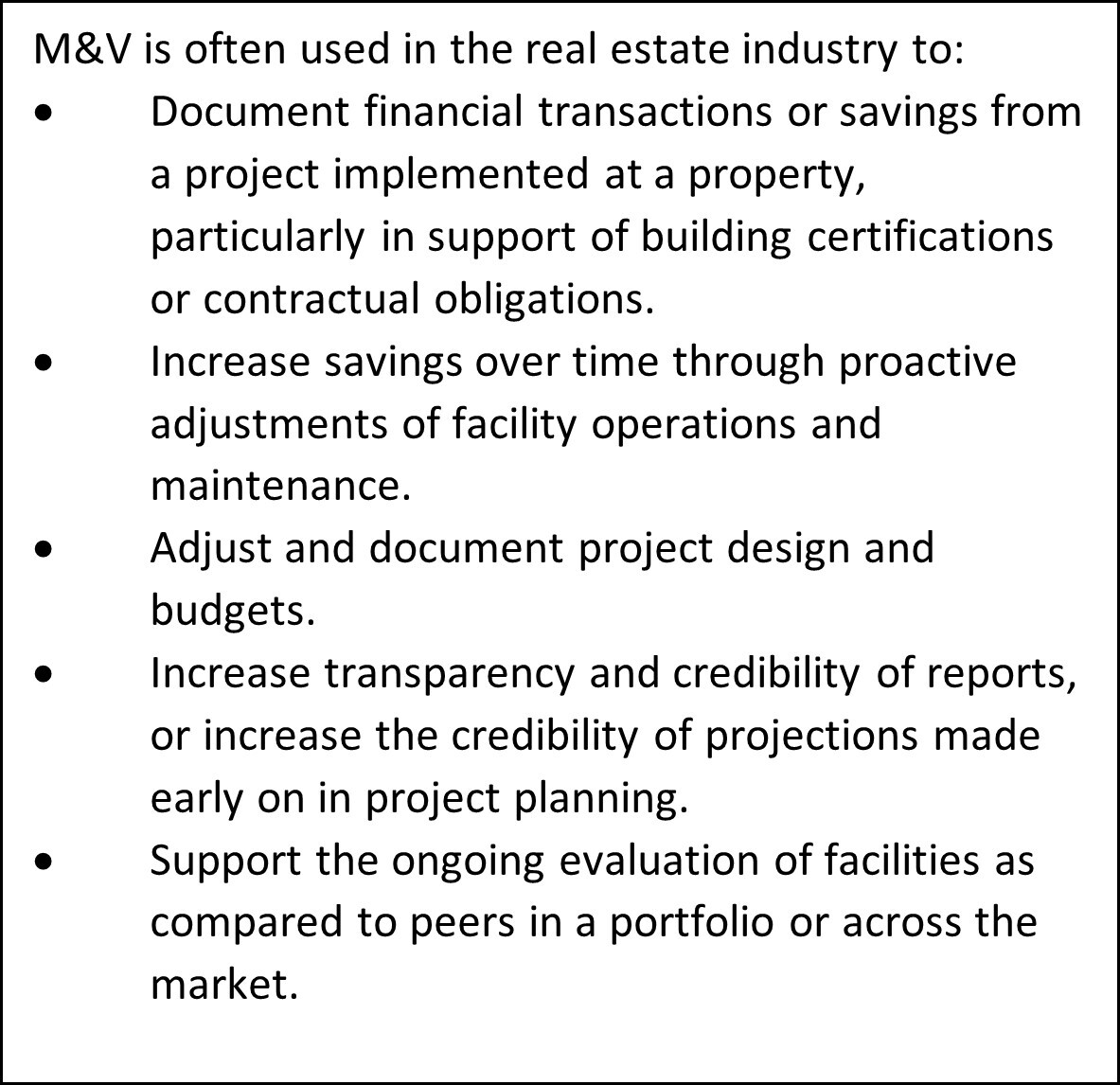The Importance of Measurement & Verification
Building renewal is centered on an investment strategy that delivers ongoing value to its stakeholders: owners, tenants, investors, and society. Meeting these objectives can be measured in many ways: net operating income, avoided future risk, tenant attraction/retention, achieving environmental and social governance (ESG) reporting targets, and ultimately delivering a healthy, productive, environment for building users. Realizing maximum value for building investments requires measurement and verification (M&V) of progress toward meeting a building owner’s or other stakeholder’s organizational objectives.
The amount of value created by going through the building renewal process is partly dependent upon the ability to accurately measure and verify environmental, financial, and other aspects of organizational performance with respect to a building investment. Without measuring and ensuring the anticipated results are achieved, it is much more difficult to capitalize on and communicate the benefits of investments. Moreover, a thorough M&V process may be essential for contractual reasons, assessing savings for performance targets, or monitoring how savings persist over time. In some areas, regular M&V with reporting and required tune-ups are required, unless building performance standards are met.
What is Measurement & Verification?
According to the Efficiency Valuation Organization, M&V is “the process of planning, measuring, collecting, and analyzing data for the purpose of verifying and reporting energy savings within an individual facility resulting from the implementation of energy conservation measures.” Energy savings are determined by comparing energy use before installation and after, then adjusting the calculations based on changes in conditions that may affect the performance of the equipment or overall building.
Why is Measurement & Verification Important?
Without an M&V process in place, you may be unable to quantify the results of your energy efficiency or sustainability investments, and any savings accrued through a building retrofit or upgrade project might be lost over time. The M&V of energy-saving projects requires special planning, as well as careful management of systems and operations. By using accepted M&V techniques, owners, managers, and investors can quantify that performance targets are being met and document a history of accomplishments to use in future projects.

Building owners, facility managers, and project investors can also benefit from M&V techniques that overlap with other integrated efforts, such as monitoring system performance and controlling costs. Furthermore, M&V documentation can be structured to fulfill ESG reporting, or other required building performance standards submission requirements.
Other reasons for M&V include:
- Providing a loan to someone for systems or investments
- Helping service providers be more accountable
- Knowing when to reprogram controls or system parameters
- Documenting compliance for building performance standards
- Quantifying savings
Measurement Tools
There are numerous tools on the market to measure a building’s energy or sustainability performance, whether you are trying to measure consumption of a particular space or system, or how the building fares against its peers in the market.
Defining what is being measured will determine the most appropriate measurement tool for the application. The following list details a few of the different measurement tools that can quantify energy and sustainability performance levels at building, systems, or component levels:
- Submeters monitor or measure the energy consumption of a portion of a property, or energy consumed by a particular system or space (e.g., a submeter is needed to measure the energy consumption of a data center located within an office building for purposes of applying for the ENERGY STAR® label).
- Building Management System (BMS) or Energy Management System (EMS) software is used to monitor, control, and optimize the energy consumption and performance of complex systems and spaces within a building.
- EPA’s ENERGY STAR Portfolio Manager is an online energy management tool used to measure and track energy, water use, and the reduction of greenhouse gas emissions achieved in commercial buildings across a portfolio. Building owners, managers, or property owners can also use this tool to set investment priorities, identify under-performing buildings, verify efficiency improvements, and receive EPA recognition for superior energy performance.
- Rating systems are interactive tools used to track and assess a building’s energy or sustainability performance relative to a peer group or baseline. Rating systems can be proprietary in nature or publicly available, and are often designed with a specific purpose and audience. Some examples of energy or sustainability rating systems include Leadership in Energy and Environmental Design, ENERGY STAR, and Green Globes.
Additional Resources
Check out the Building Renewal Series on BetterBricks.com to learn more about this important, comprehensive process:
- What is Building Renewal?
- Funding Your Building Renewal
- Why You Need a Strategic Operations & Maintenance Program
- Recognizing and Mitigating Common Pitfalls
- Marketing a High-Performance Building
